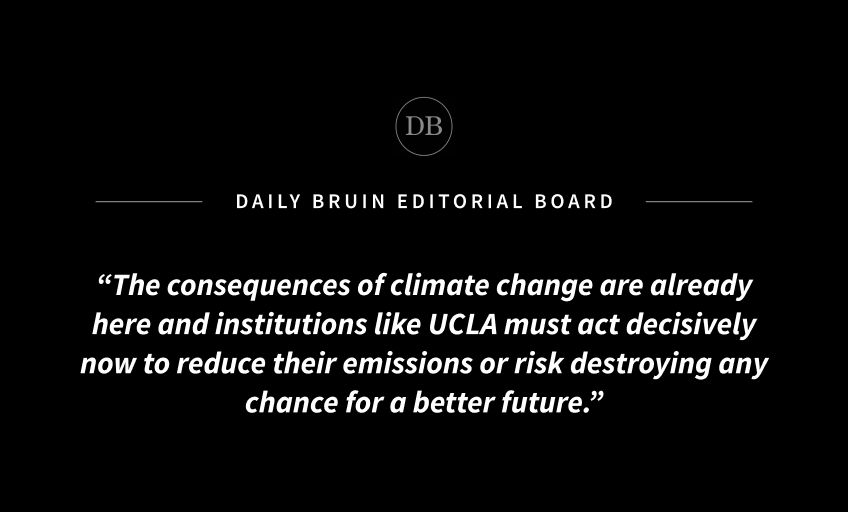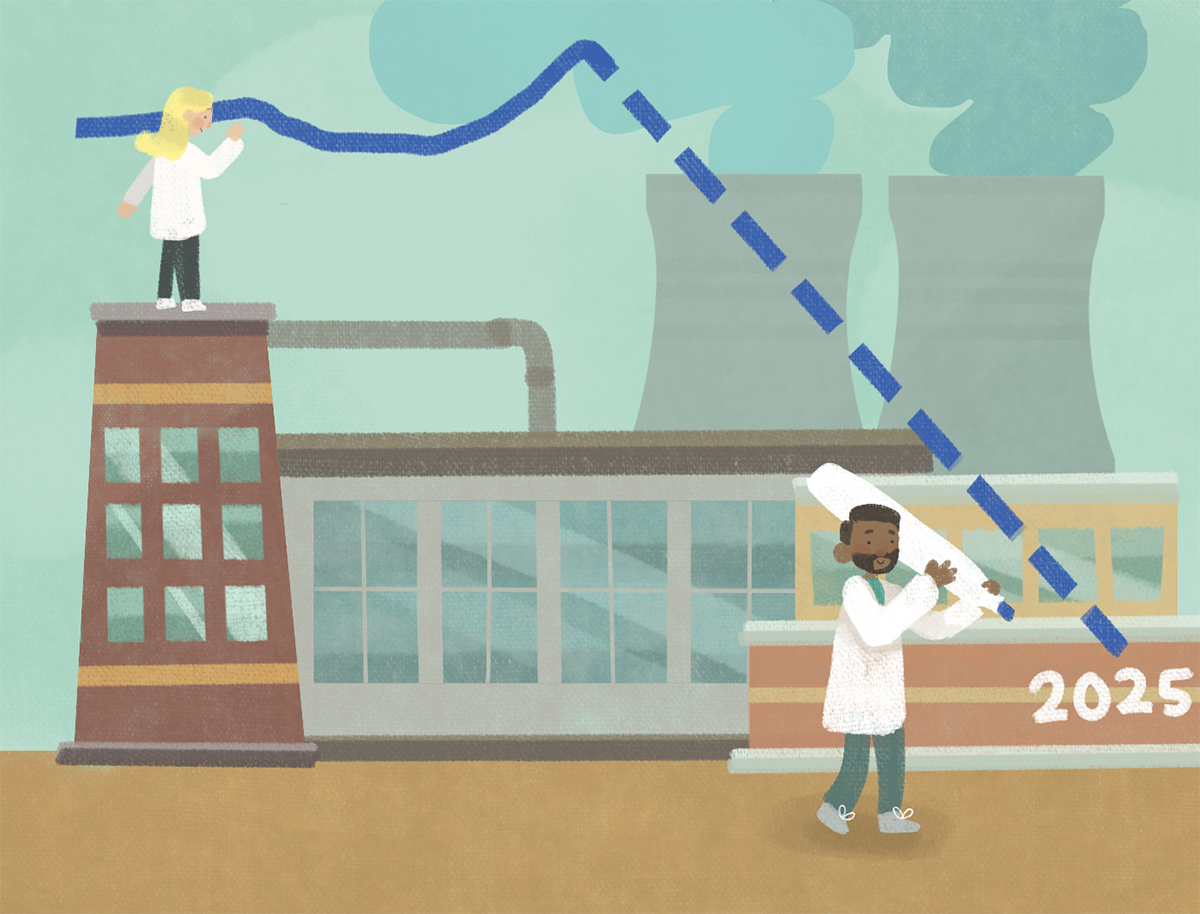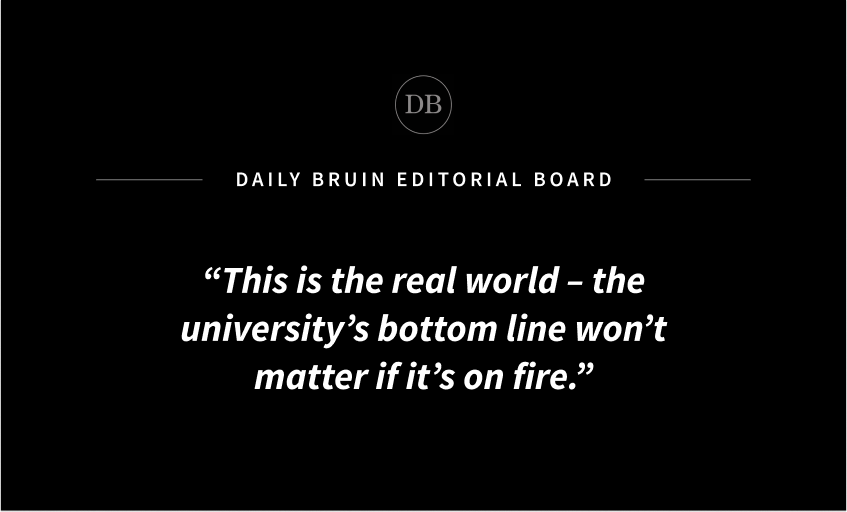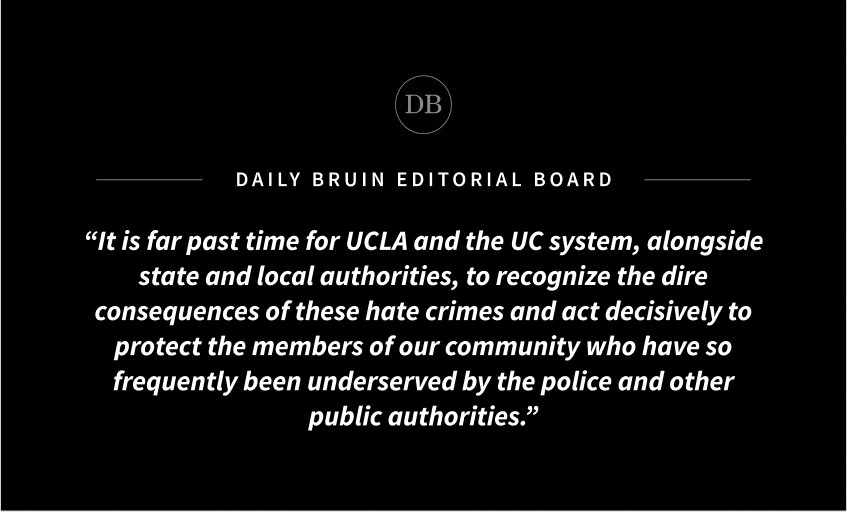Editorial: UC campuses must take urgent action to reach 2045 carbon neutrality goal

By Editorial Board
Jan. 17, 2024 8:57 p.m.
In 2013, the University of California committed itself to reaching carbon neutrality by 2025.
At the time, it was a bold but commendable goal that would require a fundamental transformation of the entire UC system. The deadline of the project was a “steep mountain,” according to then-newly appointed UC President Janet Napolitano but one that some of the nation’s top public universities could ultimately summit.
The UC didn’t even get close.
In 2023, it gave up on reaching net zero emissions by 2025. According to the UC’s Carbon Neutrality Dashboard – which was intended to track the progress of the Carbon Neutrality Initiative – the UC emitted over 800,000 metric tons of carbon dioxide last year.
In July, current UC President Michael Drake essentially threw in the towel, announcing a new set of “stronger” climate goals for the University that supplanted the 2013 carbon neutrality pledge.
The new target is a 90% reduction in the UC’s carbon emissions relative to 2019 levels. The new deadline is 2045, the same year that the entire state is supposed to achieve net zero greenhouse gas emissions under the California Climate Crisis Act of 2022.
This institutional moving of the goalposts is emblematic of the University’s broader struggles with achieving meaningful climate action on UC campuses.
While the UC’s total emissions have decreased by about 30% in the years since the start of the CNI – even with campus expansions that have introduced new sources of emissions – it was certainly not enough to reach net zero emissions by next year.
On the other hand, the new climate goals were also driven by the reaction to the UC’s controversial reliance on carbon offsets to reach net zero emissions. Carbon offsetting programs allow people and institutions to reduce their carbon footprint by investing in projects that reduce emissions.
While carbon offsetting is a theoretically helpful tool for reducing emissions, the effectiveness of many climate action projects that receive funding is often questionable or greatly exaggerated, which ultimately contributed to the UC’s decision to limit the use of carbon offsets in the future.
According to a report from the MIT Technology Review, UC administrators admitted that the UC could only reach carbon neutrality next year by spending nearly $20 to $30 million annually in carbon offsets, which would have accounted for more than half the total reduction in emissions.
Instead, the UC has pushed back its deadline to reach carbon neutrality and, rather commendably, focused new efforts on directly reducing carbon emissions on campuses. The new guidelines have introduced a limit on the use of carbon offsets to reduce emissions at UC campuses. Under these rules, only 10% of emissions reductions can be tied to offsets programs.
However, the move to push back the target date for net zero emissions by nearly 20 years has been more contentious.
In a Dec. 5 meeting, the Undergraduate Students Association Council unanimously passed a resolution with one abstention, backed by the California Public Interest Research Group, encouraging UCLA to commit itself to 100% clean energy by 2035.
This recent resolution is a positive step in ensuring that UCLA, the highest emitter of all the UC campuses as of 2018, actively works toward reaching carbon neutrality through direct action.
The critical issue, however, is that we do not have 20 years to reduce emissions. We probably don’t even have 10.
The consequences of climate change are already here, and institutions such as UCLA must act decisively now to reduce their emissions or risk destroying any chance for a better future.
The UCs have already implemented over 1,100 energy efficiency projects, resulting in substantial savings of $400 million in energy costs. In addition, the UC Clean Power Program directly provides seven campuses with electricity free of carbon emissions.
The commitment to renewable energy is evident through the installation of more than 100 on-campus solar projects and power purchase agreements for over 195 megawatts of utility-scale solar and wind energy, an amount equivalent to powering 30,000 homes.
As the UC works toward its new carbon-cutting goals, it plans to use biomethane – methane sourced from landfills and food waste – as a transition fuel. The University is actively working to replace 20% of fossil gas on campuses with zero-carbon biomethane by 2025.
However, we will still need to wait to see how the university will go about reducing greenhouse gas emissions. The UCs are expected to set emission reduction goals for 2030, 2035 and 2040 by Jan. 1. The campuses are then supposed to start implementing action plans to meet these goals by the start of the following year.
The biggest challenge the UC faces right now in meeting its new 2045 deadline is its significant reliance on natural gas, responsible for 80% of the university’s current emissions.
But the UCs are taking steps in the right direction. UCLA is currently conducting a state-funded decarbonization study to reduce the campus’ emissions from energy production by 90% or more.
Now, the UC must transition from rhetoric to action, as the imperative to succeed is more pressing than ever. We can’t fail to address the escalating threats to the environment that challenge our world today and endanger the world of tomorrow.





